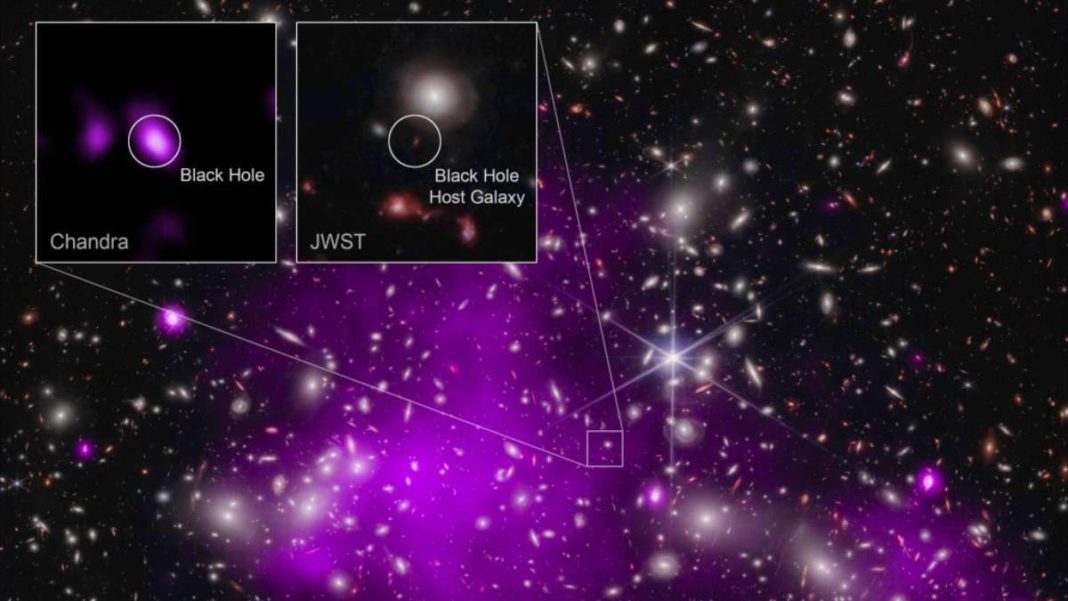UNITED STATES: NASA researchers have identified an ancient galaxy in the early universe hosting a supermassive black hole that challenges existing theories on black hole formation and offers unprecedented insights into early galactic evolution. The findings, made possible by data from the James Webb Space Telescope, have sent shockwaves through the scientific community.
This remarkable discovery points to the existence of a supermassive black hole in the galaxy known as UHZ1, which existed less than a billion years after the Big Bang. What sets UHZ1 apart is the extraordinary size of its central black hole, which accounts for an astounding 50% of the galaxy’s total mass.
The research team, led by NASA, used the Chandra X-ray Observatory to hunt for supermassive black holes in these early galaxies. Supermassive black holes that are actively feeding emit intense X-ray radiation, making them detectable.
Among the 11 early galaxies identified, UHZ1 stood out, magnified nearly fourfold by gravitational lensing. The X-rays emanating from UHZ1 were significantly higher than the background, a clear indication of an active galactic nucleus powered by a supermassive black hole.
Central to understanding this discovery is the Eddington Limit, which governs the maximum rate at which a black hole can consume material from its surroundings. This limit is influenced by the energy loss as matter falls into the black hole, radiating energy that effectively hinders further accretion and thus restricts a black hole’s feeding rate.
By analyzing the energy emitted by the black hole in UHZ1 and assuming it feeds at the Eddington Limit, researchers estimated a lower limit on its mass, which was found to be at least 107 times the mass of the Sun. This suggests that the black hole in UHZ1 makes up roughly half of the galaxy’s total mass, a truly remarkable revelation.
Historically, there have been two prevailing hypotheses in this regard. The first posits that the first stars in the universe were exceptionally large, resulting in unusually large black holes that grew rapidly through mergers and gas accretion. The alternative theory suggests that supermassive black holes formed very early in the universe through the direct collapse of dense gas clouds.
However, calculations regarding the black hole in UHZ1 have thrown a spanner in the works for both of these theories. To attain its size through the direct collapse of a gas cloud, it would have needed to feed at the Eddington Limit for its entire history. If it formed from a supernova, it would have had to feed at twice the Eddington Limit. This underscores the extraordinary and groundbreaking nature of the UHZ1 black hole’s existence.
Also Read: NASA Prepares Advanced Rocket for Landing Humans on Moon



